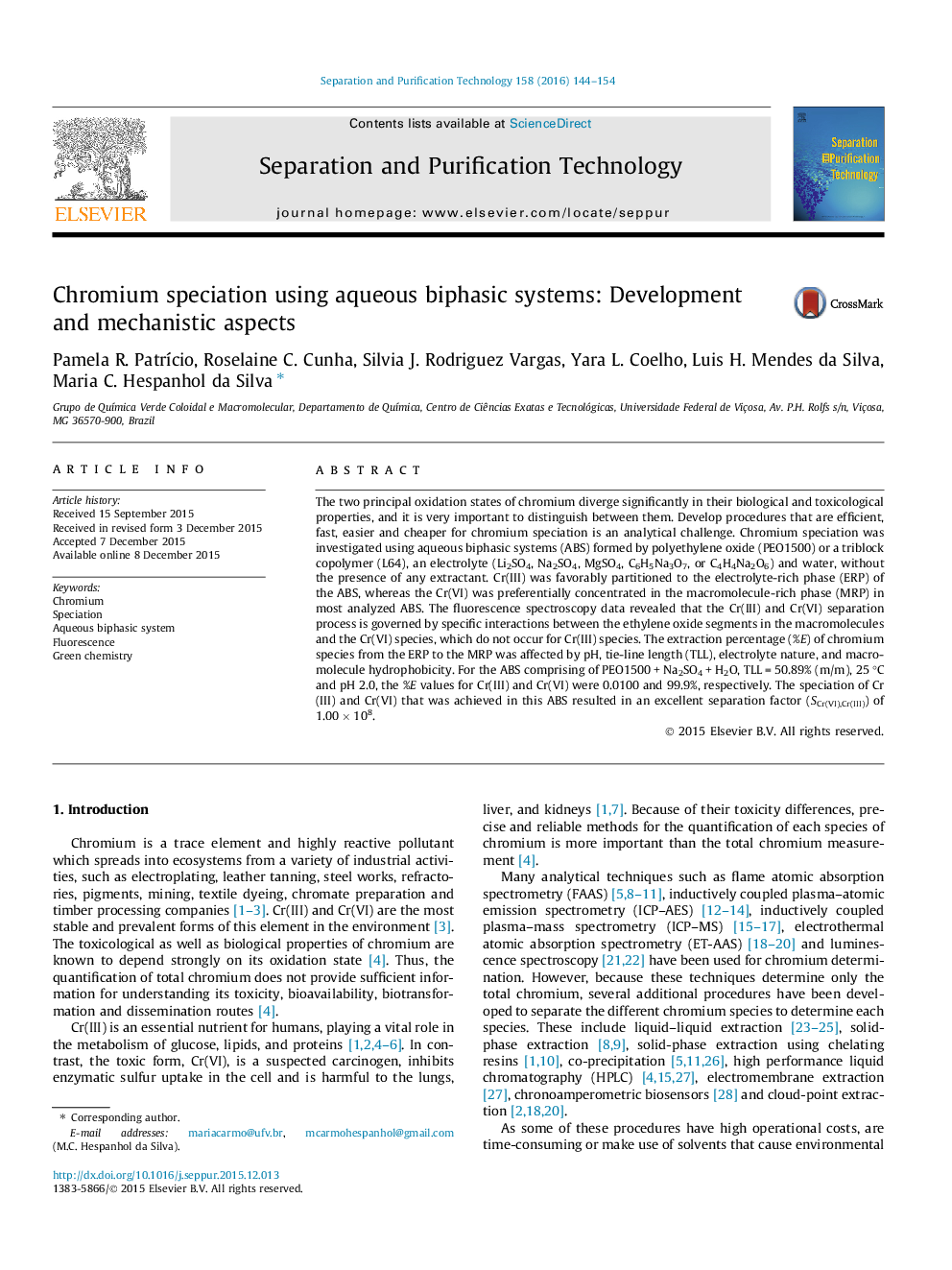| کد مقاله | کد نشریه | سال انتشار | مقاله انگلیسی | نسخه تمام متن |
|---|---|---|---|---|
| 640206 | 1456962 | 2016 | 11 صفحه PDF | دانلود رایگان |
• Aqueous biphasic system (ABS) is an environmental friendly speciation tool.
• The efficiency of chromium speciation depends of pH and several ABS parameters.
• Separation process is governed by macromolecules and Cr(VI) species interactions.
• Cr(VI) and Cr(III) go to macromolecule- and electrolyte-rich phases, respectively.
• Excellent separation factors between Cr(VI) and Cr(III) were obtained.
The two principal oxidation states of chromium diverge significantly in their biological and toxicological properties, and it is very important to distinguish between them. Develop procedures that are efficient, fast, easier and cheaper for chromium speciation is an analytical challenge. Chromium speciation was investigated using aqueous biphasic systems (ABS) formed by polyethylene oxide (PEO1500) or a triblock copolymer (L64), an electrolyte (Li2SO4, Na2SO4, MgSO4, C6H5Na3O7, or C4H4Na2O6) and water, without the presence of any extractant. Cr(III) was favorably partitioned to the electrolyte-rich phase (ERP) of the ABS, whereas the Cr(VI) was preferentially concentrated in the macromolecule-rich phase (MRP) in most analyzed ABS. The fluorescence spectroscopy data revealed that the Cr(III) and Cr(VI) separation process is governed by specific interactions between the ethylene oxide segments in the macromolecules and the Cr(VI) species, which do not occur for Cr(III) species. The extraction percentage (%E) of chromium species from the ERP to the MRP was affected by pH, tie-line length (TLL), electrolyte nature, and macromolecule hydrophobicity. For the ABS comprising of PEO1500 + Na2SO4 + H2O, TLL = 50.89% (m/m), 25 °C and pH 2.0, the %E values for Cr(III) and Cr(VI) were 0.0100 and 99.9%, respectively. The speciation of Cr(III) and Cr(VI) that was achieved in this ABS resulted in an excellent separation factor (SCr(VI),Cr(III)) of 1.00 × 108.
Figure optionsDownload as PowerPoint slide
Journal: Separation and Purification Technology - Volume 158, 28 January 2016, Pages 144–154
